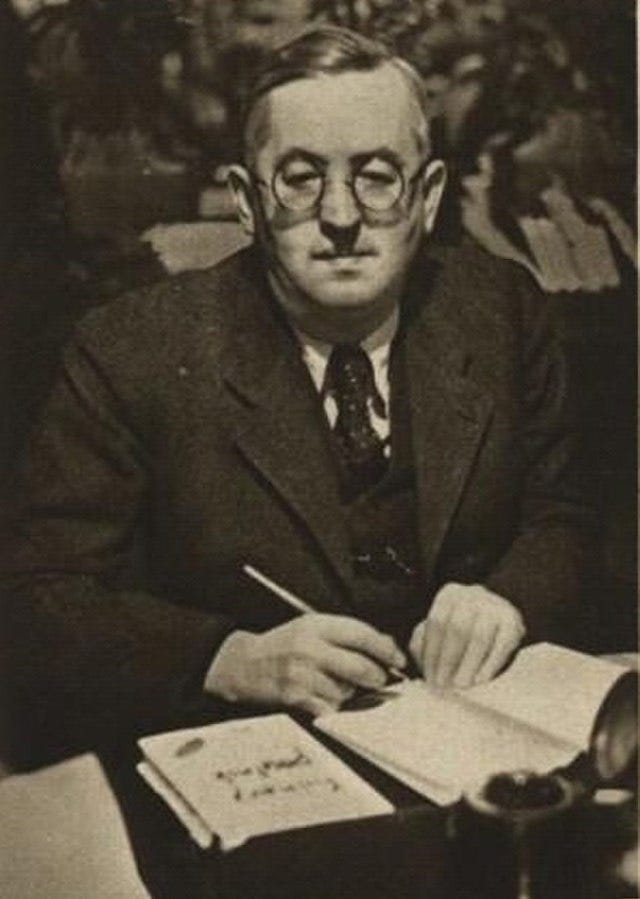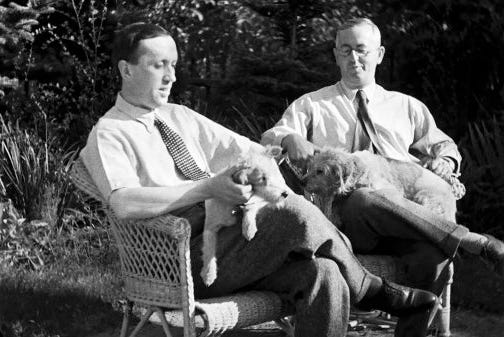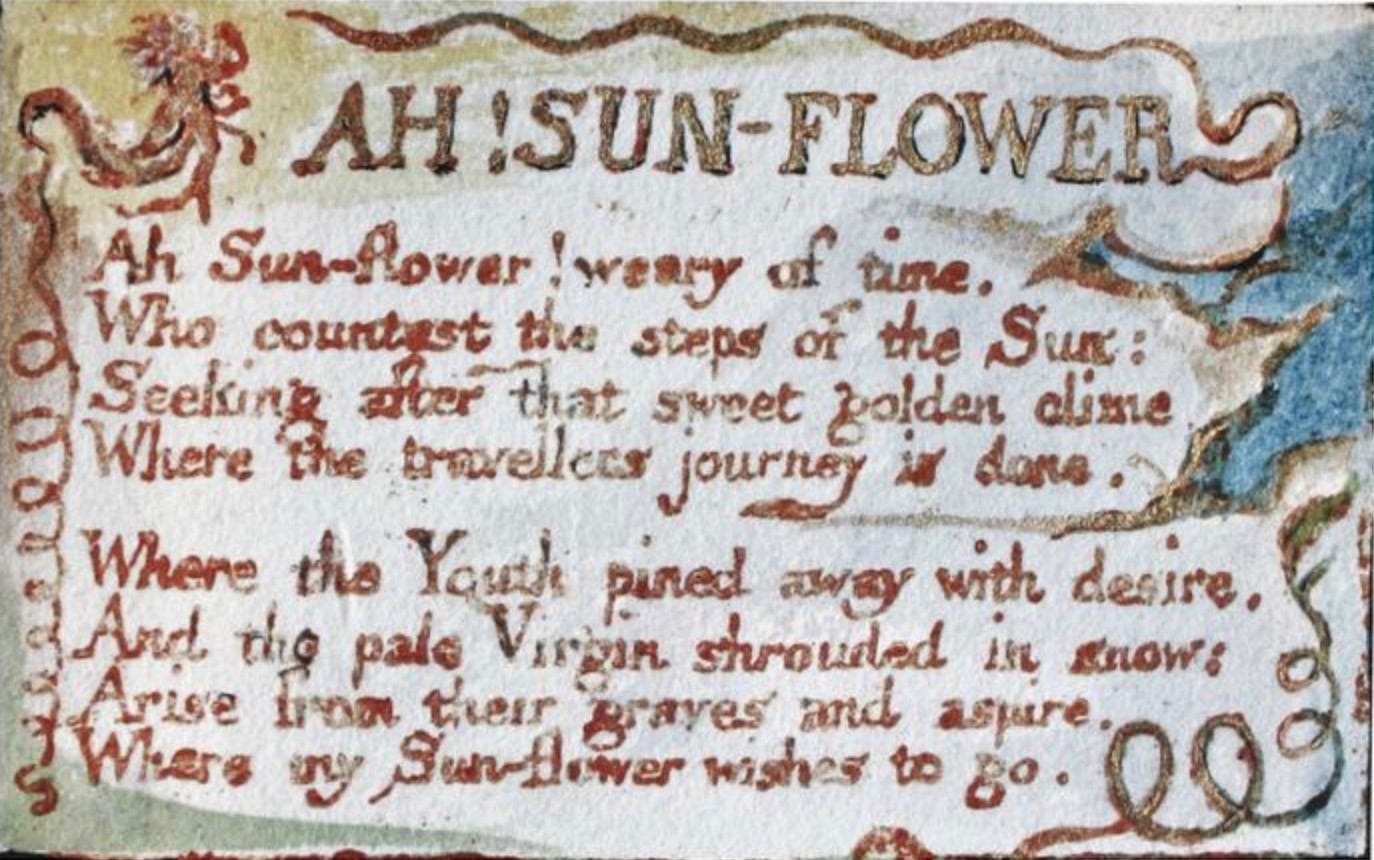Dear Reader,
I will admit that it has been difficult to focus on writing this week. It seems that the very least one can do is bear witness to the horrific events in Ukraine. I did not know until this week that the Ukrainian flag was designed to symbolize a field of sunflowers beneath a blue sky. Then I learned about this brave woman, who confronted a Russian soldier occupying her city in southern Ukraine.

As hard as it has been for me to write about it, I do think that this week’s book has something to offer us at this difficult time: a series of often amusing meditations from a great humanist about the exciting, confusing, frustrating, and habit-forming practice of working with plants and making gardens. No matter how small, gardens serve as sanctuaries, and as sources of companionship with the world around us. Every garden is an act of solidarity with the future.
Review
The Gardener’s Year
Karel Čapek, translated by M. & R. Weatherall
Dover Publications, 2017
$9.95
108 pages
While any time of year is fine for reading garden books, winter may be the best. We gaze out the window at the snow-covered pot on the balcony, or at the bare outlines of a quiet flower bed, and we can curl up with a book in the happy knowledge that there is no weeding or watering that should be taking priority. Though I have a substantial stack of garden titles to enjoy this winter, a recent Twitter thread on literary oddities pointed me to a slim volume of delights: The Gardener’s Year, published in 1929 by the Czech writer Karel Čapek.
Čapek is perhaps best known as the author who popularized the term “robot,” in his science-fiction play R.U.R. The word was actually invented by his brother Josef, a prolific artist and writer who drew the captivating pen-and-ink illustrations that are sprinkled throughout The Gardener’s Year like jimmies on a delicious scoop of ice cream. The two brothers were close, and they collaborated extensively throughout the 1920s and 30s. Karel tended gardens both in Prague, where he convened notable intellectuals and politicians on Fridays, and in the village of Stará Hut, 45 kilometers south of the city. So he had plenty of opportunity to dig and plant.
“Odd as it may appear, a gardener does not grow from seed, shoot, bulb, rhizome, or cutting, but from experience, surroundings, and natural conditions,” explains Čapek near the beginning of The Gardener’s Year. The idea that we gardeners are not just cultivating, but being cultivated, not just growing things, but growing ourselves, is only one of the stimulating ideas that run below the jolly, boisterous surface of this book, which proceeds through the months of the year with strategic asides on key topics that include rain, seeds, and soil. The lively translation was made in 1931 by Marie Weatherall, a Czech linguist, and her British husband Robert, a biology teacher at Eton.
The section on winter exemplifies the cheerfully obsessive spirit with which Karel meets the challenges of each season. He captures the waiting and worrying of the cold months. “If I knew that it would help, I would wrap my holly in my own coat, and draw my pants over the juniper.” He starts his seeds indoors, and watches in awe: “Almost any plant grows from under the seed upwards, lifting the seed on its head like a cap. Think if a child should grow carrying its mother on its head.” On the anxious search for signs of spring, Karel presents one of his many entertaining lists: crocuses, garden catalogs, snowdrops, and . . . neighbors: “As soon as they bustle out into the garden with spades and hoes, shears and bast, tree-washes and powders for the soil, an experienced gardener knows that spring is at hand.” So true!
Karel is also attentive to the irony that all our endless bustling is minor compared to the actual life force of nature itself. “Men complain of bad conditions; chrysanthemums stick to their guns.” There is a wonderful section on buds, and the author displays a certain kinship with Thoreau and Dickinson in his admonition to stay local and stay focused. “There will be no end of your discoveries. But you must choose a small piece of earth . . . and then you will see open lips and furtive glance, tender fingers and raised arms, the fragility of a baby, and the rebellious outburst of the will to live.” What truly makes The Gardener’s Year a miniature masterpiece of wit and whimsy are the illustrations by Josef, who depicts the avid gardener in an array of awkward, lumbago-inducing positions, and in various states of perplexity, elation, frustration, and delight.
Alas, both brothers came to untimely ends. They were prominent liberals and anti-fascists, and in the 1930s the Gestapo placed them on “enemies” lists. Karel, who struggled with poor health, died of pneumonia in December of 1938 at the age of 58, a few months prior to the German invasion. Josef was arrested and imprisoned in a series of concentration camps, where he was assigned odious tasks—including the making of calligraphic family trees for S.S. officers at Buchenwald. His poems and translations circulated among prisoners at Sachsenhausen. He died of typhus at Bergen-Belsen in 1945, just before that camp was liberated, and his remains were never identified.
The Čapeks’ house in Stará Hut is now a museum dedicated to their legacy. Karel and his wife are buried at the Vyšehrad Cemetery in Prague, with this additional inscription: “Here would have been buried Josef Čapek, painter and poet. Grave far away.”
It seems likely that the short pieces that comprise The Gardener’s Year were originally published as newspaper or magazine columns, and the reader will note some repetition—especially regarding composting and soil amendments, topics that seem especially dear to the author’s heart. Yet at a time when tanks are rolling through the fertile farmlands of Eastern Europe, these sections also make for some of the deepest reading.
There are soils as fat as bacon, light as feathers, crumbly like a cake, blond or black, dry or inflated with damp; all these are diverse and noble kinds of beauty; while all that is greasy, cloddy, wet, tough, cold and sterile is ugly and rotten, unredeemed matter, given to man for a curse, and it is as ugly as the coldness, callousness and malice of human souls.
It is unclear just which events in 1920s Europe or in the author’s life prompted this comparison between poor soils and humanity’s baser attributes, but it was during the rise of Hitler and Stalin that the brothers Čapek devoted their lives to nurturing the human spirit and building up civil society. Josef wrote, “We don’t see germs because they are under the earth; we don’t know the future because it is within us.” There is an indomitable spirit in this book that serves the gardener well in any year, but especially this one.
Other Voices, Other Forms
Another great Czech artist who had to contend with the Nazis was the composer Bohuslav Martinů. Martinů had the good fortune to flee successfully to France and then the United States, where he first settled near Boston. He wrote his sublime Sonata for Flute and Piano (1945) for Georges Laurent, the principal flutist of the Boston Symphony Orchestra. The work is said to have been inspired by the birdsongs that Martinů heard while staying on Cape Cod. [Though the piece is referred to below as the “First,” no second flute sonata by Martinů ever appeared.]
Poem of the Week
In solidarity with the people of Ukraine, here is “Ah! Sun-flower” in William Blake’s own hand, via the UK’s National Poetry Library.
For Your Reading Radar
I am quite intrigued by Rebecca Hussey’s recent review of Daisy Hildyard’s The Second Body, which explores the idea that each human has a body with defined boundaries (the body we think we know) and another that interpenetrates with our global ecosystems (a body we ignore to our peril). Hildyard engages in dialogue with a butcher, an expert in wild-animal trafficking, and a mycologist, among others. Rebecca suggests that the book poses timely questions: “How would our lives change if we thought of the earth as our body? How would our language change?”
For Your Calendar
On Friday, March 4th at 7 PM Eastern, Harvard Bookstore will be hosting an event with historian Megan Kate Nelson, in conjunction with the launch of her new book Saving Yellowstone: Exploration and Preservation in Reconstruction America. Details are here.
Bookshop of the Week
The Globe Bookstore & Café, an English-language bookshop, is just down the street from the National Theater in Prague. So it might be fun to combine a browse at the Globe with a performance. A new play entitled Robot Radius, based on R.U.R by Karel Čapek, will be premiering in April of this year.
That’s it for this week. Take care, and keep an eye out for signs of spring. xo Nicie















Thank you for this lovely introduction to the Čapek brothers, Nicie.
I’d LOVE to know what you think of THE SECOND BODY! Thank you for reading and sharing my piece!